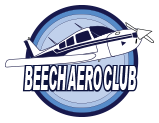Dave, it really isn't a hassle flying into Sun-N-Fun. The basic instructions are simple. You must know the place, speed, and altitude to join the mix. You monitor the frequency, and do what they say (Green on white Musketeer, follow the orange Cherokee. Wag your wings to acknowledge'). You do not talk on the frequency unless you have a real emergency. If you arrive at a busy time, you will be close to a lot of other airplanes. If everyone is paying attention, it's no big deal as you are all going the same way. There are guys in the SnF tower watching everyone with binoculars. If someone is going too fast or too slow, or is out of place, they will receive instructions. The instructions may include 'Orange Cherokee, break right and return to the stacks'. You will most likely be landing on the 60' wide parallel taxiway; the main runway gets reserved for heavier iron and emergencies.
You may be landing two or three in simultaneous trail: 'Orange Cherokee, land on the last third; Green on white Musketeer, land on the center third'; tan high-wing, land on the first third'. If you aren't comfortable with making spot landings and being close to other airplanes, then arrive very early, or just before the afternoon airshow closes the field; or save landing at SnF (or Oshkosh) for when you feel better about it.
NOTE! I read the SnF info, and I see they have displaced the threshold on both the taxiway (which has been widened to 75 feet), and the runway. They say there will be a colored spot (orange or green) you will be told to land on (on the taxiway). Sounds to me like they have had one too many cases of one plane landing on top of another (which has happened on many or most years), and have scaled back simultaneous landing operations.
You must be prepared for ground handling. That includes watching the flagmen for turnoff instructions, and doing what they say right away (there will be planes behind you). It also includes having a big sign to hold up in the windshield that says "AIRCRAFT CAMPING", or you'll wind up being sent to the wrong end. General parking is on the East end, while the camping is on the West end.
Aircraft camping facilities are great. You'll be right under the arrival end on most days (Easterly winds), and under portions of the daily airshow and most of the fly-bys. Good showers and Portolets; camping store; transportation; etc. But you will be in the sun all day, unless you wangle a spot in the wooded area on the North edge of the camping area. I'm not sure how they wangle that; maybe they just taxi there and no one runs them off. Many people erect shade facilities over part of their plane; especially the high-wing drivers. If you are a drive-in camper, and you get there early, there is a lot of shaded camping in the main campground. There will be a nice breeze on most days. The last two years had terrific weather. It may be warmer this year; it has been a warm Spring in the Southeast, and SnF is in the second half of April rather than the first half. FBO fuel trucks make regular rounds in the aircraft camping area.
As mentioned in Doug's post, there is a ton of info on the SnF website; and you can request the brochure. If memory serves, it even includes the windshield signs (AIRCRAFT CAMPING; FUEL NEEDED; CLASSIC PARKING; GENERAL PARKING; etc.).
There are only two reasons why I quit flying into SnF many years ago. The first is the hassle with rental cars. You can pick them up on the field out by the main entrance, but you can't get them anywhere near your plane. The second major issue, for me, is the grit that gets into every inch of every hinge, bearing, and bushing on the plane. I am usually there for many days. After the plane has been parked for a few days, with everyone and their sister taxiing around, flightline ride tractor tours, fuel trucks, etc. stirring up the dirt, it sifts into everything. It would take me months to get the grit out of everything; just wasn't worth it to me. It isn't too bad if you are just in and out; and it isn't as bad in Aircraft Camping as it is in the general parking area. The camping areas are usually pretty grassy (mowed), but the travel routes start showing wear pretty quickly. They do have water sprayers that ride around each morning after dry days, but the water dries up within an hour or two. Better than nothing, but....
